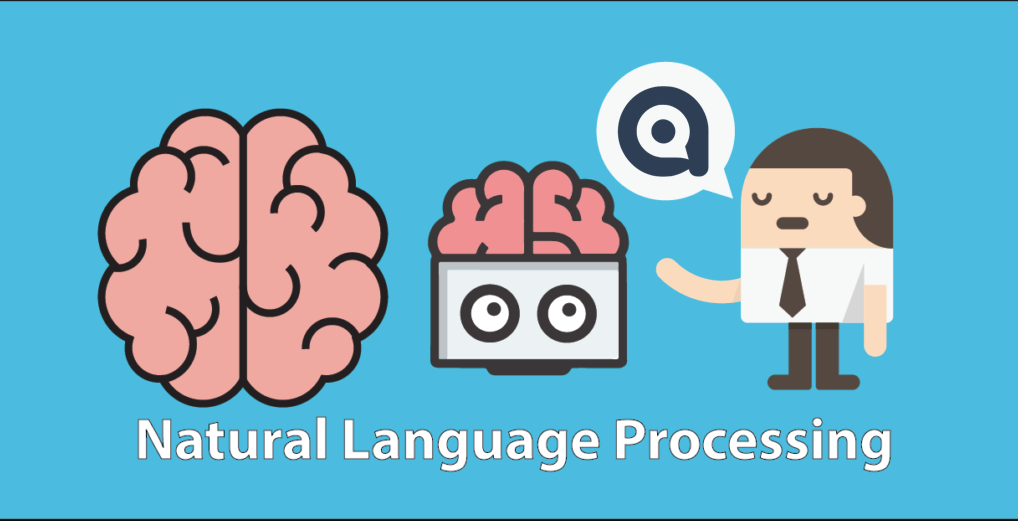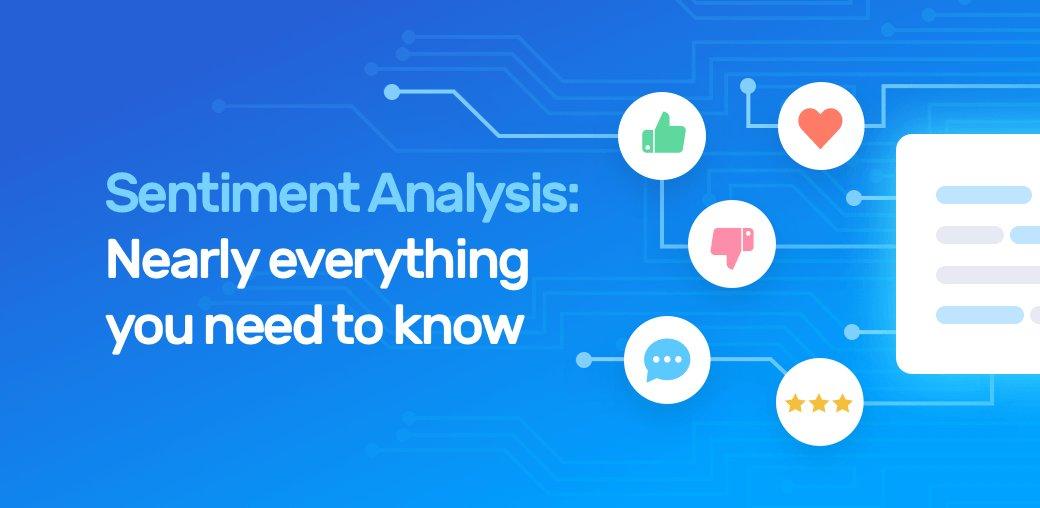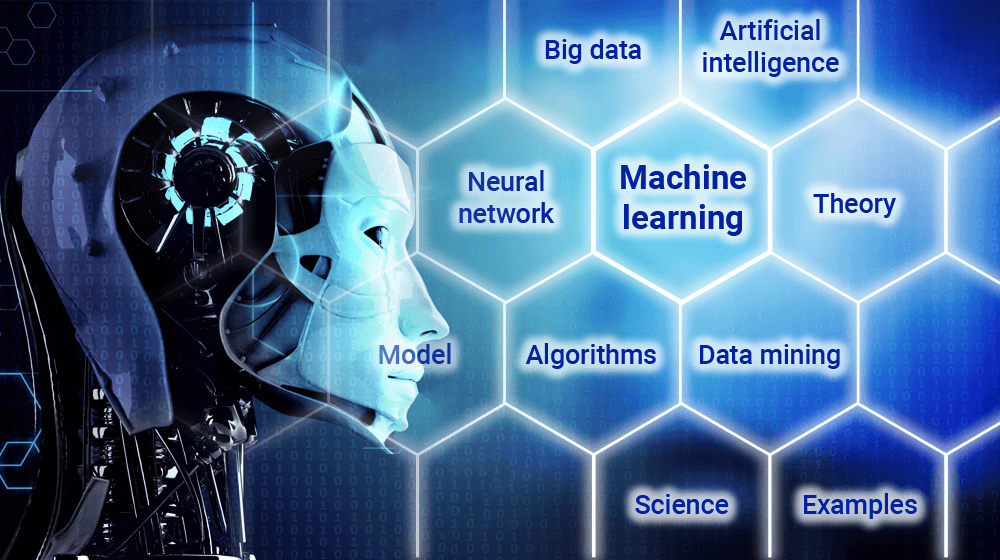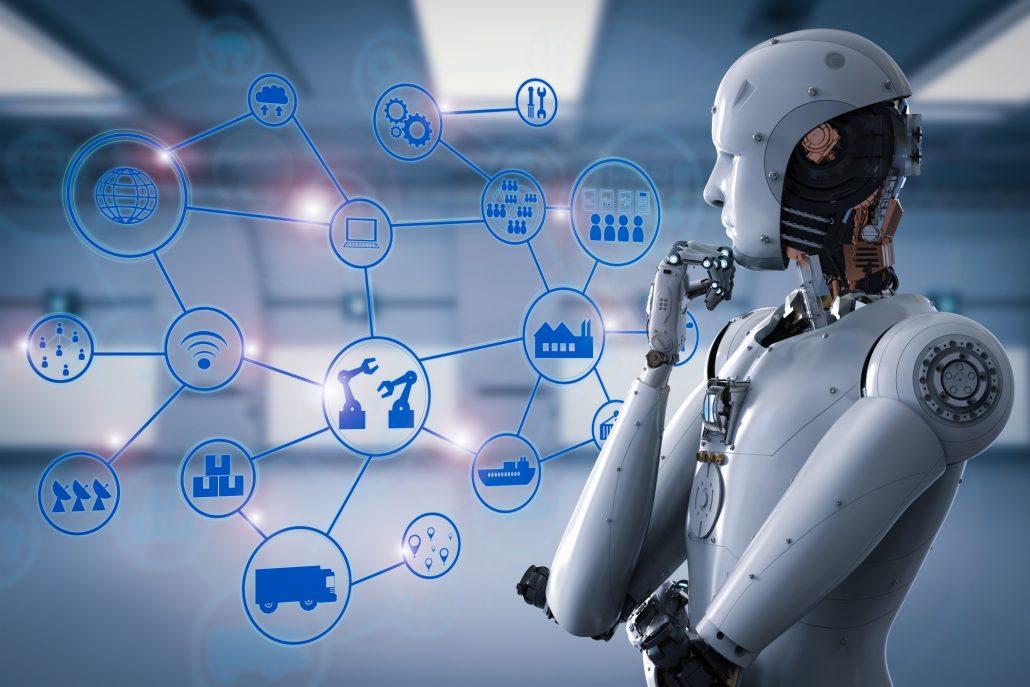50+ AI Terms Every Digital Marketing Professional Should Know in 2024
Summer Nguyen | 02-12-2019


The Most Popular Extension Builder for Magento 2
With a big catalog of 224+ extensions for your online store
Suddenly, artificial intelligence (AI) took a prevalent position in the world of digitalisation. If we look a few decades back when scientists were talking about artificial intelligence, was looking like a dream.
But now, it spread everywhere, from mobile to home appliances every system is embedded by AI. Till now there are lots of people who really do not understand what actually AI stands for. Even many IT experts sometimes face difficulty for explaining the difference between machine learning and deep learning and what exactly neural network is.
To overcome you from this issue, here, we will run down the basic 13 AI terms that being a market professional you must know:
1.Algorithm
Algorithms are the artificial intelligence that changes the world behind the scenes. In this context, Google is the best example that delivers the required results based on its algorithm. While we enter the keywords, Google robots start processing for the most relevant result according to the algorithms created. Many people are confused about how these algorithms are created, like whether they are man-made or machine-made. But don’t get confused, because, these are created by both human-based programming and machine-made programming which is called machine learning.
2.Artificial Intelligence

AI is a branch of computer science that creates a machine that has human-like qualities. This machine is designed in such a way as that in every situation it reacts smartly to solve any issue.. AI systems are developed in such a way to perform tasks like visual perception, decision-making, speech recognition, and language translation. One of the biggest advantages of AI development solutions is that they can think better without being reprogrammed.
3. AI Safety
AI safety is a multidisciplinary field focused on assessing the long-term implications of AI. It addresses concerns about the sudden development of superintelligent AI that might pose risks to humanity. The goal is to develop guidelines and safeguards to ensure the responsible and safe evolution of artificial intelligence.
4. Big Data
Big data is a term used to describe data sets that are too large or complex to be effectively analyzed using traditional data processing techniques. In areas like e-commerce, it includes vast amounts of diverse information, such as customer transactions and product reviews. Dealing with big data is challenging due to its sheer size, variety, and speed of generation.
5.Chatbot

This is a computer-based program which can stimulate effective conversion with human users. For chatbot features, numerous brands are motivated to shift their market from offline to online mode. They all set up a chatbot not only on their website but also on various social media networks to answer consumer’s queries successfully. The pop-up image of the chatbot has a greater influence on consumers.
Related: Revolutionize Customer Experience With The Best AI Chatbots On The Planet
Different types of chatbots
- Website chatbot
- Process Management Chatbot
- Sales Chatbot
- Marketing Chatbot
- Customer Support Chatbot
- Facebook Messenger Chatbot
- Twitter Chatbot (Twitter Bots)
- Email Chatbot (Email Automation)
- Skype Chatbot
- SMS Chatbot
6. ChatGPT
ChatGPT is an OpenAI-developed chatbot with a substantial language model. It is trained on a massive dataset of text and code and can generate text, translate languages, write different kinds of creative content, and answer your questions in an informative way.
7. Cognitive Computing
Cognitive computing is a branch of artificial intelligence (AI) that studies systems that try to mimic how humans think and reason so they can understand data, speak naturally, and learn from encounters. The aim is to make smart machines that can learn and decide what to do in a way that is similar to how people do it.
8. Dataset
A dataset is a structured collection of information, like a digital file containing organized and related data points. You can think of it as a well-arranged group of facts or figures, with each piece of information labeled or tagged to make it easy for computers or people to understand and work with the data efficiently.
9. Expert System
An expert system is like a smart computer buddy that makes decisions by following set rules and knowledge. It acts kind of like an expert on a specific subject. For example, in health, it can look at symptoms and suggest possible reasons, almost like a helpful online doctor.
10. Forward Chaining
Forward chaining is a method employed by machines to deduce potential solutions by working through a problem and analyzing various hypotheses. It involves a sequential process of reasoning and decision-making. For example, in a diagnostic system, forward chaining could help identify potential causes of a medical condition by systematically evaluating symptoms and possible contributing factors.
11. Intent
Intent, a pivotal concept in chatbot training and natural language processing, defines the purpose or goal behind a user’s input. In chatbot interactions, identifying the intent helps the system generate appropriate responses. For instance, if a user says, “Set an alarm for 7 AM,” the intent is to set an alarm at a specific time.
12. General AI
General AI, also known as strong AI, refers to artificial intelligence with the capability to perform any intellectual task that a human can. Unlike narrow or specialized AI, which excels in specific domains, general AI aims for versatility across a wide range of cognitive tasks. Achieving general AI implies machines having a comprehensive understanding and competency comparable to human intelligence in diverse areas.
13. Google Bard
Google Bard is an AI chatbot similar to ChatGPT but distinct in its ability to pull real-time information from the internet. While ChatGPT relies on data until 2021 and lacks internet connectivity, Google Bard can access and incorporate the latest data available on the web.
14. Heuristic Methods
Heuristic methods are like using quick and clever tricks to solve problems fast, even if it’s not the perfect solution. It’s like taking a shortcut to get things done quickly. Imagine using a GPS that doesn’t always find the absolute shortest route but helps you reach your destination faster based on traffic.
15. Machine Intelligence
Machine intelligence serves as an umbrella term encompassing various types of learning algorithms, including machine learning and deep learning. It denotes the capability of machines to acquire knowledge and perform tasks that traditionally require human intelligence. In applications like image recognition, machine intelligence enables computers to learn patterns and make accurate classifications based on data.
16. Microsoft Bing
Microsoft Bing, a search engine, now employs technology akin to ChatGPT, offering AI-powered search results. Similar to Google Bard, Microsoft Bing is connected to the internet, enhancing its capacity to deliver up-to-date and relevant information.
17. Knowledge Base
A knowledge base is like a digital library full of information that helps computers make smart choices. It’s a place where the computer stores facts and rules. In customer support, it’s like a collection of helpful guides and answers to common questions.
18. Predictive Analytics
Predictive analytics is like a digital fortune teller for computers. It uses data, math, and smart tricks to guess what might happen in the future based on what happened before. In online shopping, it could predict what you might want to buy next, sort of like an online shopping helper.
19. Rule-Based Systems
Rule-based systems are computer helpers that follow a set of clear instructions or rules to make decisions. It’s like creating a step-by-step guide for the computer to follow. Think about email filters that decide if an email is spam or not based on specific rules like certain words or sender information.
20. Speech Recognition
Speech recognition is when computers understand and interpret spoken words. It’s what lets your phone understand your voice commands or virtual assistants like Siri and Alexa. Picture this: you talk to your phone, and it magically turns your words into text or follows your spoken instructions.
21. Neural Network
Usually, we create a neural network to make our AI better. As you may have observed these look similar to the human nervous system and brain. This is also called a biologically inspired computational model. neural networks are applicable to the field of, business, data mining, medicine, telecommunications, pure sciences, and operations management etc.
Neural Network provides the ability to AI for solving complex problems by splitting them into different levels of data. Once the first stage of data is cleared, the neural network passes the information to the next level.
22.Deep Learning

Deep learning is the process through which we overcome the challenges of feature extraction. This model focuses on the right features of an object which the programmer guides. Basically, deep learning model is inspired by our brain functioning i.e. it learns from its experience. But Deep Learning is a subfield of machine learning which is concerned with algorithms for the structure and function of the brain called artificial neural networks.
Applications of Deep Learning
- Speech Recognition
- Automatic Machine Translation
- Instant Visual Translation
- Behavior: Automated Self Driven Cars
23.Data Mining

Data mining is a process of filtering useful information from a large chunk of the old database, as this term is new compared to the others, but is widely populated in the least time. The main purpose of data mining is to take into account all the raw information and then combine the extracted information to obtain useful information.
Data Mining Techniques
- Decision Trees
- Prediction
- Association
- Sequential Patterns
- Clustering
- Orange
- KNIME
- RapidMiner
24. Natural Language

Natural language search is a search that we carried out in everyday language, for example using phrases, and questions as you would users were talking to someone. Users type such queries into a search engine, or spoken aloud with voice search, or posed as a question to a digital assistant like Siri or Cortana. For every time Google shows the relevant results. As the human can inherently understand the meaning of sentences and paragraphs but the system uses mechanics of language to identify the context and grammatical use of words in sentences.
25. The Turing test
The Turing test, named after Alan Turing, assesses a machine’s ability to convincingly pass as a human, particularly in language and behavior. In practical terms, if a machine’s outputs are indistinguishable from a human participant’s, it is considered to have passed the test. An application might involve a chatbot responding to user queries in a way that is indistinguishable from human responses.
26. Unsupervised learning
Unsupervised learning is a training approach where the algorithm learns from datasets that lack predefined labels. This form of learning involves making inferences and finding patterns without explicit guidance. For instance, clustering similar customer behaviors in an e-commerce platform without predefined categories falls under unsupervised learning, allowing the algorithm to discover natural groupings.
27. Bayesian Networks
Bayesian Networks are like digital detectives that use graphs to show how things are connected and the likelihood of events happening. Imagine a map connecting clues to solve a mystery; the computer does something similar, creating a roadmap of possible connections between different pieces of information.
28. Entity Annotation
Entity annotation is the process of tagging unstructured sentences with specific information, enabling machines to comprehend and interpret the content. This involves labeling entities like people, organizations, and locations within a document. For instance, in a news article, entity annotation could identify the names of individuals, companies, and places, facilitating structured understanding for subsequent machine analysis.
29. Entity Extraction
Entity extraction is a broader term encompassing the structuring of data for machine comprehension. This can be achieved through manual human annotation or using machine learning models. The goal is to identify and organize entities within the data, making it more accessible for machines to derive meaningful insights. In a customer feedback dataset, entity extraction might involve categorizing mentions of products, sentiments, and customer names.
30. Ensemble Learning
Ensemble Learning is when computers team up and use multiple models to be better at a task. It’s like having a group of friends with different strengths working on a project together. For instance, in predicting the weather, one model might be good at temperature, and another at humidity, and combining them gives a more accurate forecast.
31. Explainable AI (XAI)
Explainable AI, or XAI, is about making AI systems understandable. It’s like having a conversation with a computer and it can explain why it made a particular decision. For example, in loan approvals, XAI can transparently show why a loan application was accepted or rejected, helping people understand the decision-making process.
32. Generative Adversarial Network (GAN)
Generative Adversarial Network, or GAN, is like a creative duo of computer programs. One program tries to create something new, like realistic images, while the other program tries to figure out if it’s real or fake. It’s a bit like an artist and an art critic working together, where the artist keeps improving, and the critic keeps getting better at telling real from fake.
33. Fuzzy Logic
Fuzzy Logic is a way of thinking that deals with uncertainty, like saying something is “kind of true” instead of just true or false. It’s like rating a movie as “mostly good” instead of a simple thumbs up or down. Computers use fuzzy logic to handle situations where things aren’t just black or white but have shades of gray.
34. Hyperparameter
Hyperparameters, though sometimes used interchangeably with parameters, have subtle differences. They are manually set values external to the model that influence how the machine learning model learns. For instance, in a neural network, hyperparameters might include the learning rate or the number of hidden layers, impacting the model’s training and performance.
35.Image Recognition

Artificial intelligence is constantly changing as we view the world. Where humans once needed to pore through photographs and video footage to pick out faces in a real-life search. But machines are now more capable than ever of learning and identifying from a sea of other faces. There are also many apps in this context that offer image tags, auto-generated keywords, and automatic categorization based on visual topics, often across devices.
36. Neuromorphic Computing
Neuromorphic Computing is about designing computers inspired by the structure and function of the human brain. These systems aim to process information in a way that mimics the brain’s natural capabilities. In robotics, neuromorphic computing might enable machines to learn and adapt to new tasks more efficiently, resembling how humans continuously improve their skills through experience.
37. Reinforcement Learning
Reinforcement Learning is a type of machine learning where a computer learns by doing things in its environment and getting feedback. Imagine teaching a dog a new trick: when it does well, you reward it with a treat, and if it does something wrong, there’s no treat. The computer learns similarly, adjusting its actions based on the rewards or penalties it receives.
38. Linguistic Annotation
Linguistic annotation involves tagging a dataset of sentences with information about the subjects and preparing the data for analysis or assessment. This process is commonly employed in tasks like sentiment analysis and natural language processing. For sentiment analysis, linguistic annotation might involve labeling sentences as positive, negative, or neutral to train a machine-learning model to discern sentiment.
39. Python
Python is a widely used programming language known for its versatility in general programming tasks. Its simplicity and readability make it a popular choice for beginners and experienced developers alike.
40. Temperature
In language models, temperature refers to parameters controlling the randomness of the model’s output. A higher temperature introduces more randomness, allowing the model to take creative risks in generating diverse and less predictable responses.
41. Turning Tests

Turning test was created by Alan Turing in 1951, to test computer intelligence. They conduct a test based on a group of people to check chatbot relevancy. In the end, when the question is asked by them whether they are speaking to the human or chatbot, most of the people do not recognise. As the chatbot’s objective is to convince the human that they are speaking to a real person. If it does this, it has passed the Turing Test.
Benefits of AI in Testing
- Improved Accuracy
- Goes Beyond the Limitations of Manual Testing
- Helps Both Developers and Testers
- Increase in Overall Test Coverage
- Saving Time + Money = Faster Process
42. Training data
Training data consists of all the information used to teach a machine learning algorithm, specifically the dataset employed during the training phase rather than testing. For instance, in training a spam filter, the training data would include a collection of emails labeled as either spam or not spam, allowing the algorithm to learn patterns and make accurate predictions on new, unseen emails.
43. Transfer Learning
Transfer Learning is like using knowledge gained in one situation to help with a similar but different task. Think of it as using your skills in one video game to do better in a new game that has similar challenges. Computers do the same by applying what they learned in one area to be smarter in another related area.
44. Swarm Intelligence
Swarm Intelligence is problem-solving inspired by how groups of insects work together towards a common goal. Think of it like a team of robots cooperating to accomplish a task, mimicking how bees work together in a hive. Each individual in the swarm contributes, leading to efficient and smart collective behavior.
45.Sentimental Analysis

A sentimental analysis is a deep study of human behavior on AI. Nowadays, almost all business organisations are using a sentimental analysis tool to know what people are asking about their brand. This helps them to improve their performance in those particular weaker areas.
The principles used for sentiment analysis:
- Product reviews, surveys, and responses
- Individuals and organizations
- Issues, events, training, topics
- Online and social media content includes Facebook posts, Tweets, podcasts, blog comments, videos, graphics, forum posts, and images.
46. AI-Enhanced Cybersecurity
AI-enhanced cybersecurity is the use of artificial intelligence to protect computer systems and networks from cyber threats. AI algorithms can quickly analyze vast amounts of data to detect patterns indicative of a potential attack. In email security, AI-enhanced cybersecurity might identify phishing attempts by analyzing the content and behavior of incoming emails, helping to prevent users from falling victim to scams.
47. Automated Machine Learning (AutoML)
Automated Machine Learning (AutoML) involves tools and processes that make applying machine learning easier and more accessible. AutoML can automate tasks like choosing the best machine learning model and adjusting its settings for optimal performance. For example, in predicting stock prices, AutoML could automate the selection of the most suitable model and fine-tune its parameters based on historical data, simplifying the process for financial analysts.
48.Black Box

The black box in the world of Artificial Intelligence is used to store big data. The most common example of black data seems to be in, where there all data related to passengers and about the flight is stored.
Moreover, the black box is also beneficial for sophisticated online advertising, content creation, translations, email campaigns, web design and conversion optimization. Today, a Black box is also used in the latest iPhone, Google Home, and Amazon Echo.
49. Edge Computing in AI
Edge Computing in AI means doing artificial intelligence calculations on local devices rather than relying on distant cloud services. Instead of sending data far away for processing, edge computing brings AI closer to where the data is created. For instance, a smart thermostat using edge computing can analyze temperature data right in your home, making quick adjustments without needing to connect to a central server. This speeds up response time and improves efficiency in various applications, from smart homes to industrial automation.
50. Exascale Computing
Exascale Computing refers to supercomputers capable of processing an astounding one exaflop of data per second. This immense computational power allows for handling complex tasks and large datasets, making it valuable in various fields. In climate research, exascale computing could simulate and analyze intricate climate models, helping scientists understand climate change effects more comprehensively.
51. Human-in-the-loop AI
Human-in-the-loop AI combines machine intelligence with human expertise to improve AI systems’ reliability and performance. It’s like having a human collaborator working alongside AI algorithms. For instance, in language translation, human-in-the-loop AI involves human translators working with machine translation tools to refine and improve the accuracy of translations, ensuring better results for end-users.
52.Machine Learning

Machine learning is one of the subfields of Artificial Intelligence. It works on the principle that it takes data and processes itself for effective results. Presently, it is one most promising tool for business the most promising tools for business models. The biggest advantage of Machine Learning is that it quickly applies a large set of data to excel in facial recognition, speech recognition, object recognition, translation, and many other tasks.
Machine Learning also allows the system to learn and recognize patterns on its own for predictions.ess models. The biggest advantage of Machine Learning is that it quickly applies a large set of data to excel facial recognition sdk, speech recognition, object recognition, translation, and many other tasks. Machine Learning also allows the system to learn and recognize patterns on its own for predictions.
Machine Learning Usage
- Self-driving cars
- AI-enabled supply chain management
- Machine learning-enabled marketing
- Automated manufacturing processes
- Image recognition applications
53. Label
In the context of machine learning, a label is a crucial component of training data. It signifies the desired output or category associated with a specific piece of input data. For example, in an image recognition dataset, each image would have labels indicating the objects or scenes depicted, enabling the machine learning model to learn and make accurate predictions.
54. Overfitting
In machine learning, overfitting occurs when an algorithm becomes too specific to the examples in its training data, struggling to adapt to new cases. An effective model should grasp general patterns in the data, ensuring flexibility to handle diverse scenarios beyond the training set.
55. Quantum Machine Learning
Quantum Machine Learning is where quantum computing meets machine learning to solve complex problems more efficiently. Quantum computers, unlike regular ones, use quantum bits (qubits) and can process vast amounts of data simultaneously. In healthcare, quantum machine learning might help analyze genetic information much faster, leading to quicker insights into personalized medicine and treatment options.
56. Responsible AI
Responsible AI involves making sure that artificial intelligence systems are ethical, fair, and transparent in their development and use. It’s about preventing biases and ensuring accountability. For example, in loan approvals, responsible AI ensures that the algorithm doesn’t discriminate based on factors like race or gender, promoting equal opportunities for all applicants.
57.Supervised learning

Supervised learning is a type of system in which both input and desired output data are provided to machine learning. It is based on the algorithm that provides future judgement. Chatbots, self-driving cars, facial recognition programs, expert systems and robots are the best examples in this context. Basically, Supervised learning systems are associated with retrieval-based AI, they may also be capable of using a generative learning model.
Learn more: How to use Artificial Intelligence in Marketing?
Bottom Line
Hope, the above-mentioned points help you to know the most popular Artificial intelligence terms. Apart from these, you must have a handful of knowledge of Unsupervised learning, Reinforcement learning, Reinforcement learning, Intelligent Personal Assistants, Clusters, and Autonomous terminology.
If you want to see more Marketing Solutions using AI for Magento 2 stores? Take it here!

Author Bio
Lauren McLaren was born and raised in Australia. She is working for Digital Muscle Limited which is known for most affordable seo services in Australia. She’s hardworking, competent and trustworthy. Her role in the company is to manage a team of SEO Specialists. In her spare time, she loves to read, cook and watch movies.



